INTRODUCTION

With AMD, NVIDIA and even Intel working on their upcoming graphics cards (needless to say AMD and Intel are also working on upcoming motherboard chipsets) ATX 3.0 & PCIe 5.0 power supply units are certain to rise in popularity sooner rather than later. Unfortunately, since right now both standards are mostly aimed at demanding users such as enthusiasts and professionals alike, we haven't seen that many affordable models in the market, at least not from the leading companies which is exactly why this is probably about to change. Earlier this year MSI unveiled their latest MAG GL line of ATX 3.0 & PCIe 5.0 compliant power supply units and so today on my test bench i have their A850GL model.
MSI is a world leader in gaming, content creation, business & productivity and AIoT solutions. Bolstered by its cutting-edge R&D capabilities and customer-driven innovation, MSI has a wide-ranging global presence spanning over 120 countries. Its comprehensive lineup of laptops, graphics cards, monitors, motherboards, desktops, peripherals, servers, IPCs, robotic appliances, and vehicle infotainment and telematics systems are globally acclaimed. Committed to advancing user experiences through the finest product quality, intuitive user interface and design aesthetics, MSI is a leading brand that shapes the future of technology.
Currently the MAG GL line of ATX 3.0 & PCIe 5.0 power supply units includes 2 output capacities (750/850W - not to be confused with the non PCIE 5.0 variants) both of which carry the 80 PLUS Gold certification (up to 90% electrical efficiency) along with active PFC and full bridge LLC topology (DC to DC design) for high performance. The new MAG A850GL PCIE5 model delivers a strong single +12V rail (70.5A) capable of outputting roughly 98% of the units’ total power output (746W) and a peak power output of no less than 972.1W (up to 1700W for 100ms according to ATX 3.0 specs – typically this is not something I can test however), secondary minor rails with a total output of 126W, compact size, low profile (flat) cables, 4 PCIe 6+2 pin connectors, single 16 pin 12VHPWR (600W - dual color for worry free installation) connector, 120mm FDB (fluid dynamic bearing) fan and an array of electrical protections including over-current (OCP), over-voltage (OVP), over-power (OPP), over-temperature (OTP), short-circuit (SCP) and under-voltage (UVP). So, let's see whether or not the MAG A850GL is worth considering for your next power supply unit.
SPECIFICATIONS AND FEATURES

PACKAGING AND CONTENTS
A large product picture, the company logo and the main product features is what you'll see at the front of the box.
Numerous certifications are printed on the left side of the box.
The main product features along with the electrical table and the available power cables are printed at the rear.
Typically, the MAG A850GL is wrapped inside a plastic bag and placed between two foam spacers.
Along with the MAG A850GL power supply unit and its power cord inside the box you'll also find the modular cables inside their own storage pouch, 4 mounting screws and an EU regulatory notes paper.
THE MAG A850GL PCIE5 EXTERIOR
Leaving out the 12VHPWR cable which once again is braided (and has a yellow connector making it easier for end users to see when they've mounted it properly on their graphics cards) all other cables are low-profile flat ones.
Just like other compact PSUs the MAG A850GL measures just 150mm in width, 140mm in length and 86mm in height.
The 120mm FDB fan sits underneath a grille with the company name right at the center.
Once again, the company logo and the model’s name are placed on stickers located on both sides.
As expected, the electrical table is located at the base of the A850GL PCI5.
At the front we find a total of 11 ports all of which are tagged.
Turning the unit around we find the on/off power switch, power port and the usual honeycomb perforation.
THE MAG A850GL PCIE5 INTERIOR
The MAG A850GL PCIE5 uses an 120mm FDB fan by Martech to keep its temperatures in check (should be able to reach speeds of up to 2200-2300RPM).
Based on the board layout this seems to be an CWT (Channel Well Technologies) unit.
Primary capacitors are manufactured by the Taiwanese CapXon and are certified for use up to 105 degrees Celsius.
Secondary capacitors are manufactured by both CapXon and Elite (Chinsan Electronics - also Taiwanese) all of which are certified for use up to 105 degrees Celsius.
TEST BED
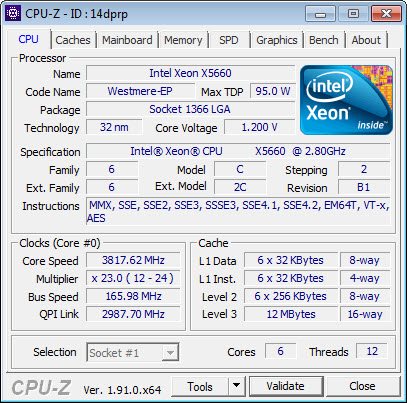

TESTING METHODOLOGY
Using a dedicated measurement instrument such as a Chroma or a SunMoon to test power supply units is without doubt the most ideal and accurate way (not to mention the fastest) to do that currently. However, it's certainly not the only way there is and so pretty much anyone can test a power supply unit just by using a test rig. Certainly, limitations do apply and so you can't really push a 1000W power supply to its limits if your system only uses 500W at peak loads and that's why over the years we saved certain hardware components for the purpose of building a dedicated PSU test rig. True it may not be as accurate as the above mentioned solutions but it comes really close and is in fact much closer to real world usage. So as always, we ran several games with maximum graphic options enabled at a resolution of 2560x1600 in order to stress every hardware component and increase the overall power demands of the system. The Passmark BurnIn Test was also used to overstress the components in an effort to provide the most accurate results possible. As a final test we also used the latest OCCT 4.4 software and its dedicated PSU testing suite since it can really bring a power supply to its knees after inside a few minutes.
Rail stability was checked/measured with the CPUID Hardware monitor and a Metex multimeter which also recorded the system load in idle and in load. As always try to remember that the power consumption numbers listed in the graph are the highest (Peak) ones recorded during the entire duration of the tests and not the average ones. Noise levels coming from the fan were recorded using the high precision HD600 ExTech Sound dBA Meter from the rear of the unit and at a range of no more than 5-10cm. Readings under load are recorded the exact moment we manually switch the fans of all graphics cards from full speed to almost zero, that way the fan of the power supply does not have enough time to slow its RPM and so by doing this we get very accurate noise level readings. Needless to say, in order to get 100% accurate readings, you need to have a noise isolated room for that exact purpose, something which is quite impossible unless you are working inside a real lab (some people use very small noise insulated boxes but due to their size both heat and noise exceed normal levels and so the results can't really be considered to be 100% accurate, nor realistic for that matter). Also do take into account that since all noise measurements take place from just 5-10cm away the final noise levels to reach your ears will be considerably less.
* After well over 10 years of testing PSUs the Intel Core i7-920 CPU of this rig failed and so we replaced it with a Xeon X5660 (we also swapped the GA-X58A-UD7 for the G1. Assassin).
TEST RESULTS



CONCLUSION
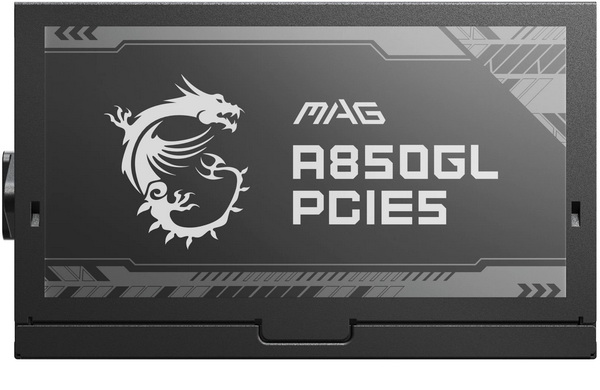
There are two aspects about the MAG A850GL PCIE5 power supply unit by MSI i feel i need to speak of, performance and of course build quality. Performance is good across the board, yes, rail stability may not be superb but it’s still solid and just what I was expecting from such a model. In terms of noise levels again, 120mm fans are never inaudible but around 46dBA at 85% stress load is not great (should easily surpass 50dBA at 100% load however, not that you’d get a PSU to use it at 100%) and even though it shouldn’t be a game breaker I do expect some potential buyers to look elsewhere. Build quality may also be good overall (CWT is among the top OEMs after all) but Taiwanese capacitors are nowhere near as popular and established as Japanese ones, even by well-known manufacturers like CapXon. That’s not to say they are easy to fail but let’s face it, even from just a marketing standpoint these things do matter and that’s why companies always point that feature out (and to be completely honest yes, I’d be more confident with a model using capacitors by Nippon Chemi-Con or Rubycon instead of by Elite and/or CapXon - Still it's worth pointing out that the MAG is MSI's "mid-end" line so using Japanese capacitors would be a slight stretch). Finally, being ATX 3.0 and PCIe 5.0 compliant means you’ll probably be using the MAG A850GL for many years to come so no problems here.
Currently retailing for USD139.99 inside the USA (Amazon.com) and for 130.15Euros inside the EU (Amazon.de) the MAG A850GL PCIE5 power supply unit by MSI lands right between several units from the competition. At the end of the day the MSI MAG A850GL PCIE5 may not be the best power supply money can buy today but it’s quite affordable, performs well, is covered by a 7 year warranty and packs quite a few standards and features which is why I highly recommend giving it a chance if you’re in the market for a new 850W unit.
PROS
- Overall Build Quality
- Good Rail Stability
- ATX 3.0 & PCIe 5.0
- 80 PLUS Gold Certified
- 12VHPWR Connector (Yellow Color)
- Electrical Protections (OCP/OVP/UVP/SCP/OPP/OTP)
- 7 Year Limited Warranty
- Price (For Some)
CONS
- Noise Levels
- Taiwanese Capacitors (For Some)

 O-Sense
O-Sense





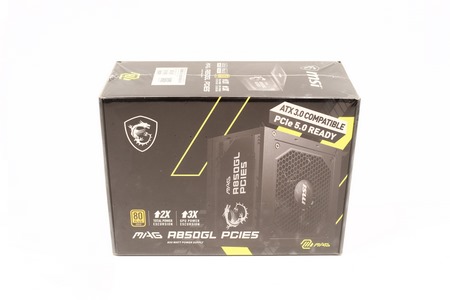
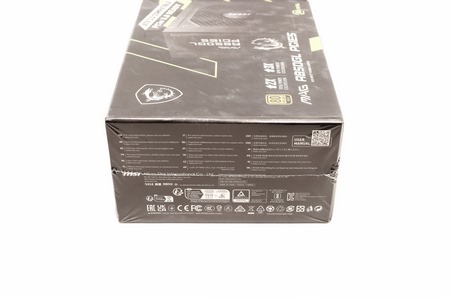


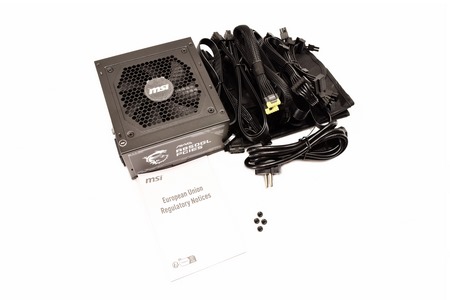



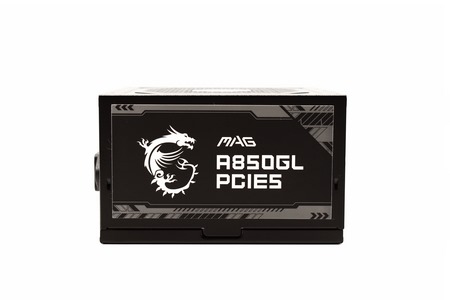
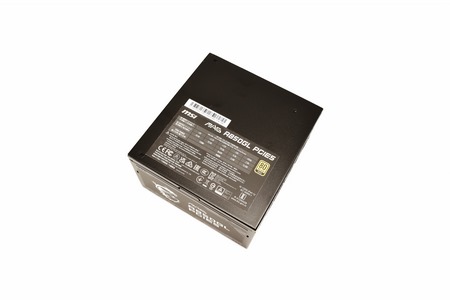

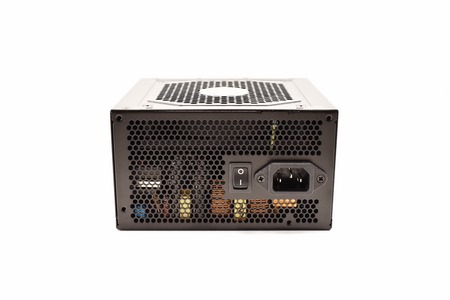







.png)

